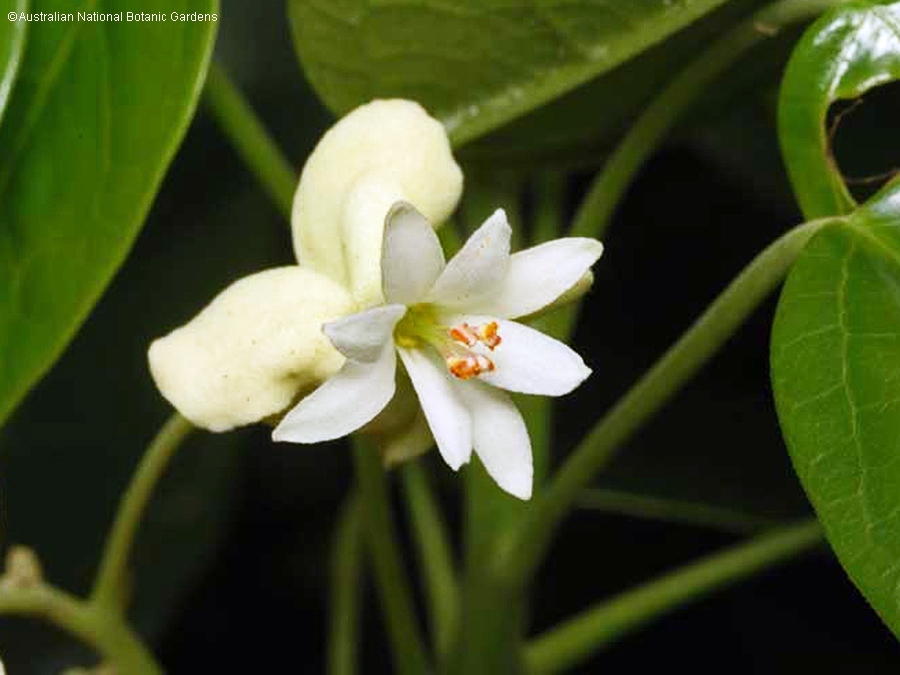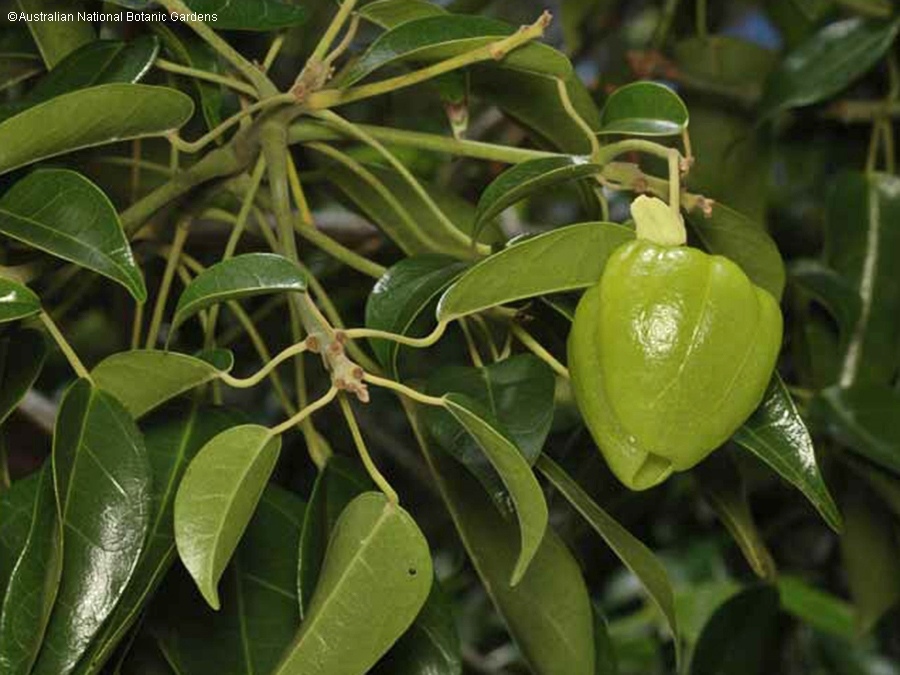Australian Tropical Rainforest Plants - Online edition
Hernandia bivalvis Benth.




Bentham, G. (1870), Flora Australiensis 5: 314, Type: "Queensland. Brisbane River, Fraser; Wide Bay, Bidwell; Moreton Bay, Herb. F. Mueller." Lectotype: "Australien. Queensland. Wide Bay: Bidwell (K, Hb. Hook., Lectotypus)." Kubitzki, K. (1969), Botanische Jahrbucher fur Systematik, Pflanzengeschichte und Pflanzengeographie 89: 126-127
Cudgerie, Grease Nut
Tree 8m high. Bark grey, smooth. Young stems moderately covered with short hairs.
Leaves alternate, simple. Stipules absent. Petioles 1.5-8 cm long, moderately hairy with short erect hairs. Leaf blade ovate or oblong-ovate, 3-15 cm long, 1.5-6.5 cm wide, base rounded or truncate, shallowly cordate, rarely shallowly peltate (with petiole inserted 1-3 mm from base of lamina), margins entire, often lobed in juvenile leaves, apex acute, acuminate. Domatia present on the leaf undersurface as hairy tufts, usually at the base of the midrib, in axils along the midrib and occasionally along lateral veins. Upper leaf surface hairless, lower surface with sparse minute hairs along veins. Upper leaf often with a few scattered black mucilaginous glands. Oil dots visible under magnification with transmitted and sometimes reflected light. Leaves 3-veined at base with 4-6 pairs of lateral veins in total.
Inflorescence a corymbose panicle, axillary. Flowers clustered in inflorescence units of 3 flowers, subtended by 3-4 petaloid bracts. Petaloid bracts elliptic to obovate, 6-9 mm long. Flowers unisexual, plant monoecious, actinomorphic. Perianth of 8 tepals, narrowly ovate, 5-7 mm long. Tepals and bracts minutely hairy and white. Each inflorescence unit 3-flowered with a central female flower and 2 male flowers. Male Flowers with 4 free spreading stamens each with stalked glands at base; anthers dehiscing via longitudinal valves opening like doors. Female flowers subtended by 2 bracteoles forming a cupule, ovary inferior, c. 2 mm long, 5 glands surrounding base of style, style simple, stigma 2 lobed.
Features not available.
Occurs in CEQ from near Dryander Creek (near Proserpine) and southwards to south eastern Queensland. Collected from drier rainforest on lowlands or hills.
This profile information and associated coding has been adapted from Cooper & Cooper (2004), Harden et al. (2014) and Telford (2007).





